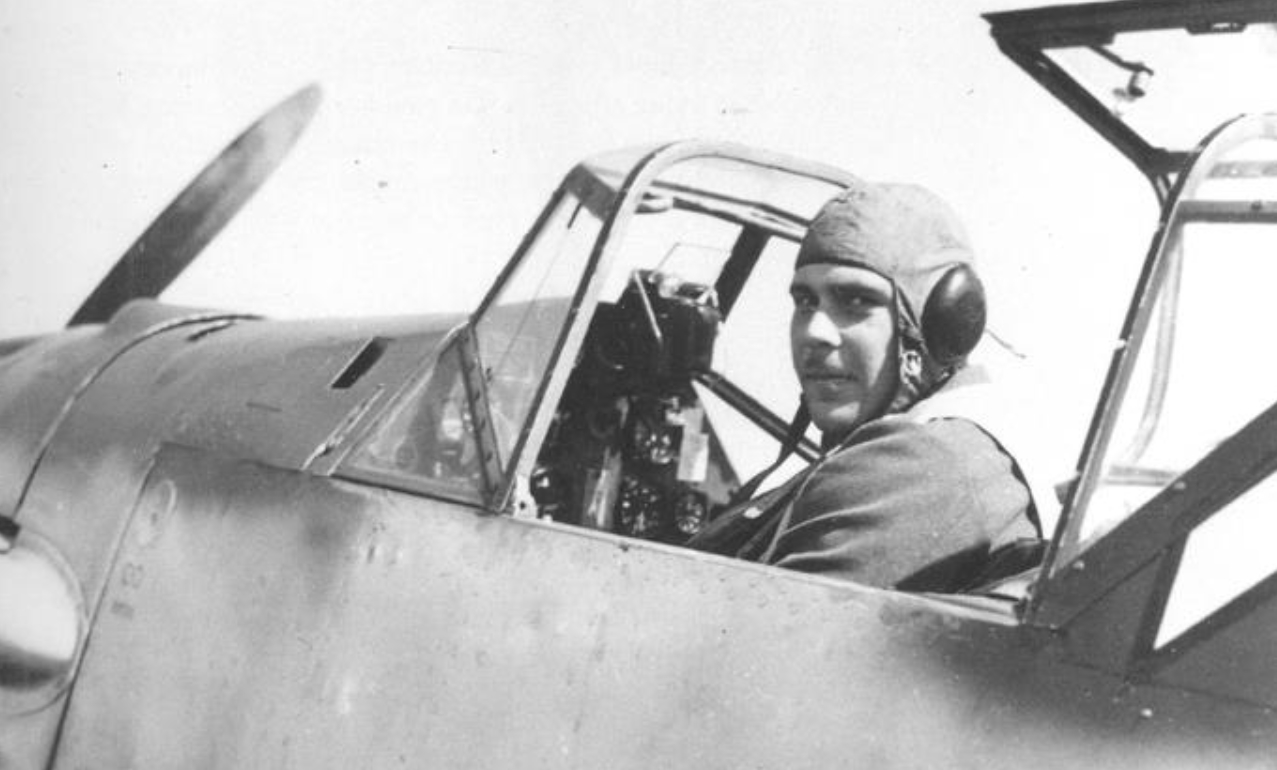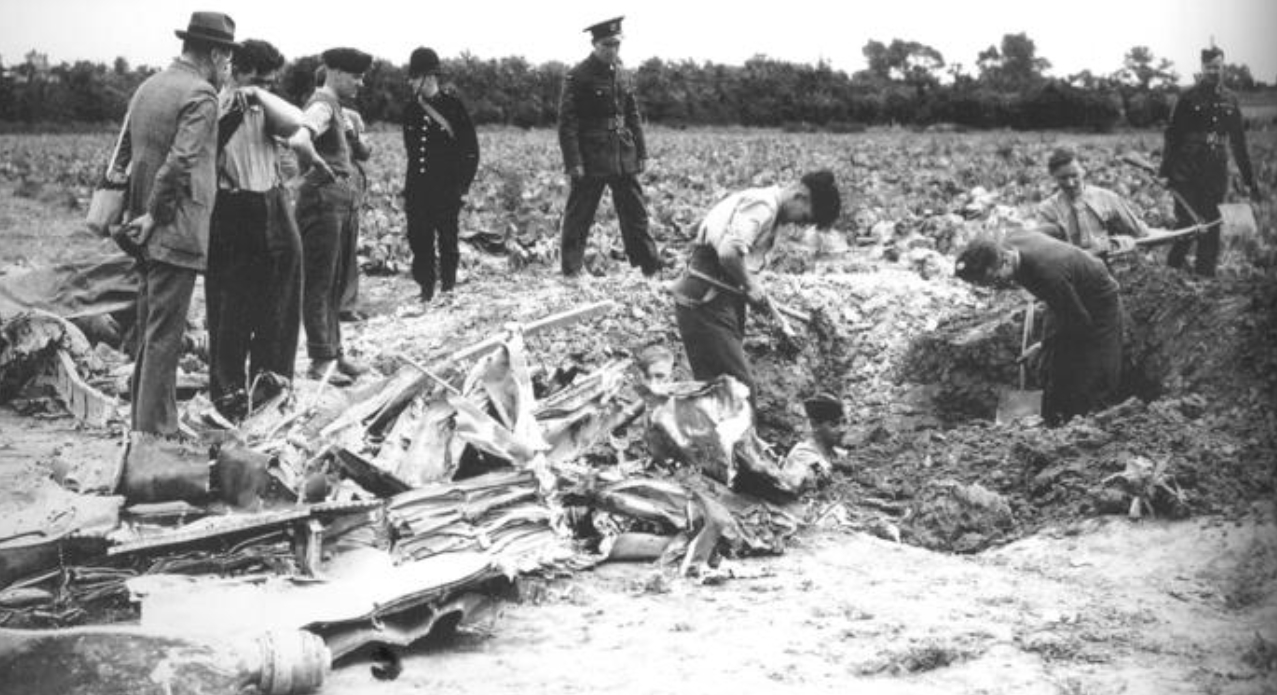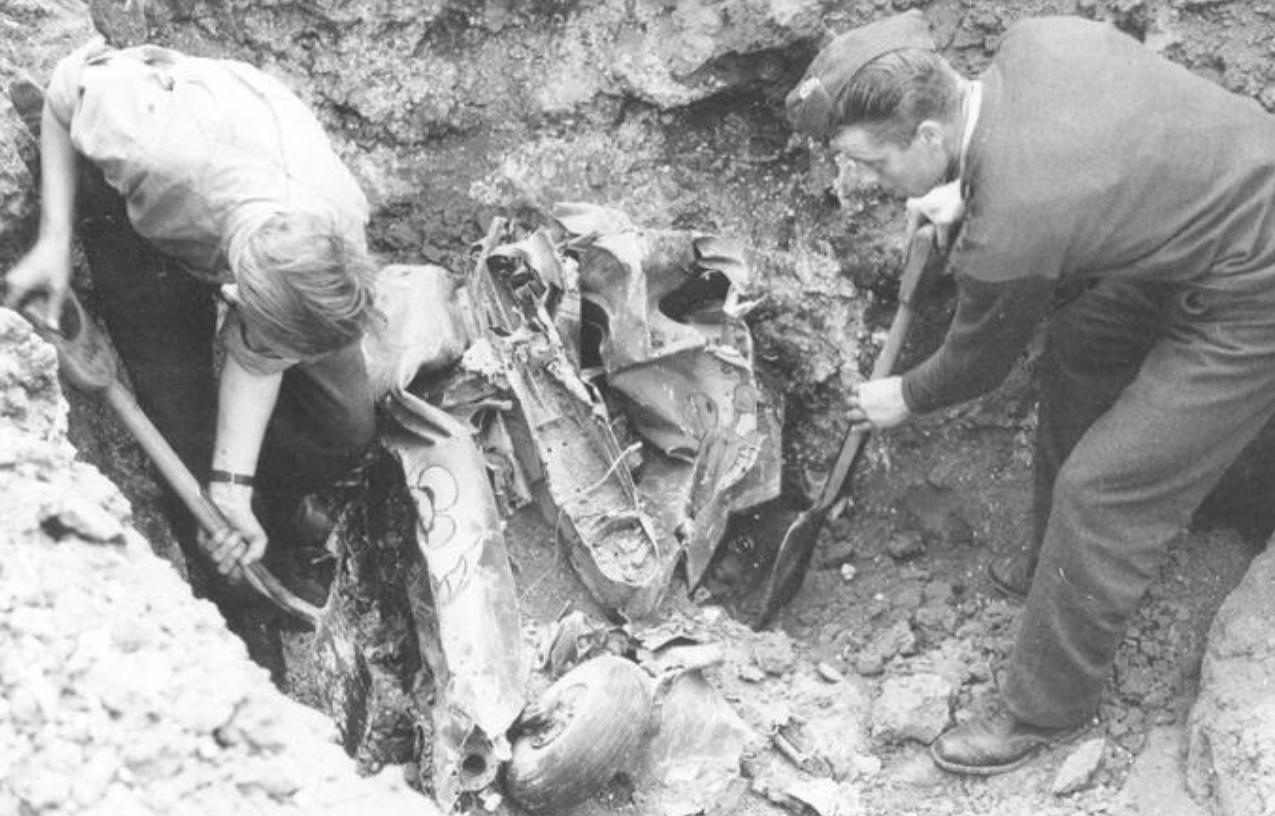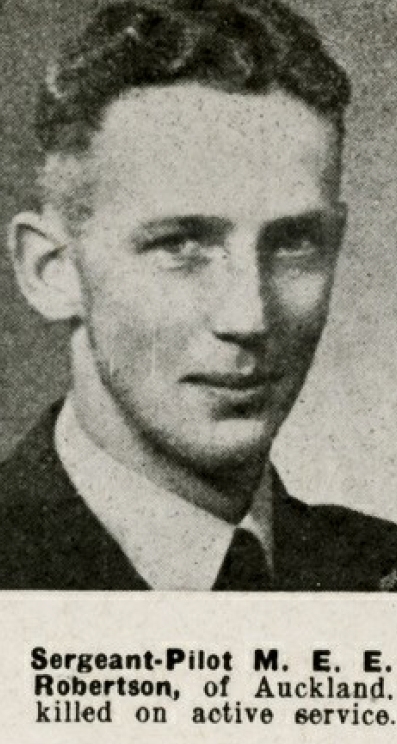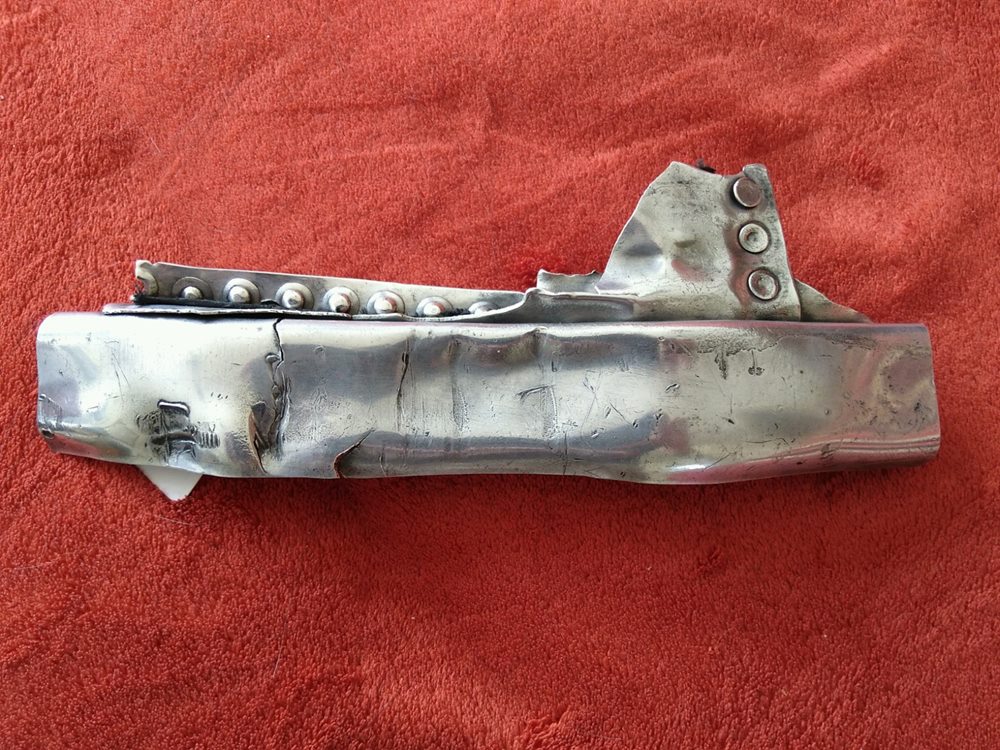
The Second World War resulted in the deaths of around 85 million people. Additionally, tens of millions more people were displaced. However, amid all the carnage people demonstrated remarkable courage, fortitude, compassion, mercy and sacrifice. We would like to honour and celebrate all of those people. In the War Years Blog, we examine the extraordinary experiences of individual service personnel. We also review military history books, events, and museums. And we look at the history of unique World War Two artefacts, medals, and anything else of interest.
Fragments of Triumph and Tragedy
In this blog, we look at two fragments of World War Two aviation history, one a German Luftwaffe Bf-109E-3 and the other a Royal Air Force Spitfire Mk.Vb. We learn how one pilot was to survive a short, brutal dogfight and how the other was to die and only receive a proper burial 70 years later.
Britain stands alone
After the invasion and occupation of France by Nazi Germany between May and June 1940, Britain stands alone. In July 1940, the struggle for air supremacy over the British Isles begins. The Battle of Britain will last three and a half months. Initially, the German Luftwaffe (air force) attacks dockyards and British shipping in the English Channel. The Royal Air Force (RAF), equipped with fewer fighters, seems hopelessly outmatched. However, the RAF does have some advantages. Thanks to Hugh Dowding, head of Fighter Command, Britain possesses the world’s first truly integrated air defence system including radar technology. As well as knowing when and where the enemy will strike, Dowding ensures Fighter Command is equipped with Hurricanes and Spitfires to intercept them. The RAF also enjoys home advantage while German aircraft operate at the extreme of their range.
The last flight of Lt. Albert Striberny
On 8 July 1940, just as the Battle of Britain is about to begin, Leutnant Albert Striberny, 3/LG2 (3 Staffel/Lehrgeschwader2), is sitting in his Messerschmitt Bf 109E-3 (work no. 2964). It’s early evening, and Lt. Striberny thinks he’s done for the day. Instead, his Staffel is ordered to escort a Dornier 17 (Do 17) on a reconnaissance mission over Dover. Once over the target, the Spitfires of 54 Squadron jump the Staffel.
Striberny manoeuvres his Bf 109 behind a Spitfire only to discover another one is on his tail. It isn’t much of a fight. He hears a sound like someone throwing peas against a metal sheet and the cockpit fills with black smoke. Covered in aviation fuel, Striberny prepares to bail out, but he’s worried about hitting the tailplane when he makes his escape. Finally, he slides open the cockpit canopy, flips the plane over, releases his straps and drops out. The parachute opens; he floats gently to earth and is immediately taken, prisoner. His Bf 109 doesn’t do so well. It crashes, disintegrating on impact, at Buckland Farm, Sandwich, Kent. One of the few recognisable pieces is the tail section with the unit’s Micky Mouse insignia. 78 years later, almost to the day, I picked up a piece of that Bf 109E-3 at Flying Legends.
Click to move to next image
Tragic accident
Spitfire AR403 was an Mk Vb built by Westland Aircraft under licence. The aircraft was fitted with the signature Merlin 45 engine and armed with two 20mm cannons and four .303 machine guns. On 11 April 1942, she was delivered to the 38 maintenance unit and then joined the 131 Squadron. She then went to 165 Squadron based at Llanbede. In August, the squadron moved south to Gravesend and started operational sweeps against the Luftwaffe over Northern France. Next, she was transferred to the 65 Squadron. On 16 January 1943 AR403 piloted by New Zealander Sgt. Malcolm Robertson was on a training flight over southern Scotland. The exercise was to practice climbing and aerobatic manoeuvres. However, during one of these manoeuvres, the Spitfire was reported to have dived vertically out of the cloud. It crashed into the grounds of Wedderlie House, catching fire on impact.
Click to move to the next image
A final resting place for Sgt. Robertson
Sadly, Sgt. Malcolm Robertson was killed in the crash. He was laid to rest at Craigton Cemetery, Glasgow. However, in 2012, following an expert anthropological examination, further human remains were found at the crash site. These remains were positively identified as belonging to Sgt. Robertson. These remains were reinterred during a ceremony with “the honour and dignity” befitting a pilot at Sgt. Robertson's grave in 2013. An initial crash inspection in 1943 recovered parts of a uniform, dog tags and a single flight boot, which were interred at Craigton Cemetery in Glasgow, following a wartime board of inquiry. Sgt. Robertson was just 21 years old. An exhibition of artefacts from Spitfire AR403 was held near Edinburgh to help raise funds for a memorial to Sgt. Robertson.
Sources: www.deadlinenews.co.uk, www.iwm.org.uk/collections/photographs
The Abbeville Boys, Focke Wulf Fw-190A1
In this blog, we take a look at the unique history of a piece of the engine cowling from Fw-190A-1 Wn.10036. The Fw-190 was part of Jagdgeschwader (JG) 26 "Schlageter" known to the Allies as "The Abbeville Boys". Piloted by Oberfeldwebel Helmut Ufer, the Fw-190 was shot down by an RAF Spitfire in July 1942.
Visiting Flying Legends 2017 WW2 warbirds airshow at IWM Duxford, I happened upon a piece of Focke-Wulf Fw-190 engine cowling. Designed by Kurt Tank in the late 1930s and widely used by the German Luftwaffe during World War II, the Fw-190 Würger (Shrike in English) quickly established itself as a fearsome multi-role aircraft. Until the introduction of the improved Spitfire Mk. IX towards the end of 1942, the RAF didn’t have a comparable interceptor at low and medium altitudes. Named after the Shrike, a small carnivorous bird of prey known for impaling its prey on spikes, the Fw-190 was nicknamed the “butcher bird”.
My particular piece of butcher bird came from Fw-190A-1 Wn.10036. The Fw-190A-1 was in production from June 1941. It was powered by the BMW 801 C-1 engine, rated at 1,560 PS (1,539 hp, 1,147 kW) for take-off. Armament included two fuselage-mounted 7.92 mm (.312 in) MG 17s and two wings root-mounted 7.92 mm (.312 in) MG 17s (in all four MG 17s synchronized to fire through the propeller arc) and two outboard wing-mounted 20 mm cannons.
On the afternoon of Sunday, 13 July 1942 Oberfeldwebel Helmut Ufer was flying at 16,000 feet near the JG26 airfield of Abbeville in France. Ufer, a long-time member of 4/JG26, was flying Fw-190A-1 Wn.10036, designated White 5, only the thirty-sixth production model.
Helmut Ufer had been a tank driver in the Reichwehr. He was released from service in 1935. He volunteered for the Luftwaffe at the start of the war and began his flight training in March 1940. Ufer had won a number of aerial victories. On 13 March 1942, Ufer shot down a Spitfire V over Wirre Effroy northeast of Boulogne. The Spitfire belonged to 124 (Baroda) Squadron, RAF, based at Debden. The pilot was Michael Gordon Meston Reid, 116060, who subsequently died of his wounds at a German Naval Hospital on 7th August 1942. Pilot Officer Reid’s grave is one of four commonwealth war graves and one Polish to be found in Hardinghen cemetery, northeast of where he was originally shot down. On 4 April 1942, Ufer shot down one of 11 Spitfires claimed by JG26 over St. Omer. He downed another Spitfire from 222 Squadron at St. Valery-sur-Somme on 30 April 1942.
Jagdgeschwader (JG) 26 "Schlageter" was known to the Allies as "The Abbeville Boys". The unit crest of a black gothic 'S' on a white shield was created to reflect its involvement in the re-occupation of the Rhineland on March 7, 1936. 4./JG26 belonged to the second Gruppe within the Jagdgeschwader 26 (II./JG26). Karl Ebbighausen then selected a caricature of a tiger's head to represent the unit and it was painted onto each 4.Staffel aeroplane with pride.
On that Sunday afternoon, a group of Spitfires from 616 Squadron led by Australian Flight Lieutenant F.A.O. Tony Gaze were on a 'Circus' to Abbeville. Tony flew with the 616 Squadron until 29 August 1942, by which time he had destroyed 4 enemy planes and one probable.
Tony Gaze finished the war a double-Ace with 11 destroys and 3 shared, including a Me262 and Arado 234, 4 probables and one V1. He was the first Australian to destroy an enemy jet in combat and the first Australian to fly a jet in combat. He has the rare distinction of being awarded the Distinguished Flying Cross three times (DFC with 2 bars) which only 48 people have received in its history. He later went on to have a career in motor racing.
Gaze later reported:
“After a right-hand orbit around Abbeville at 21,000 feet, I saw a single Fw-190 climbing up at about 16,000 feet between us and the coast. I made sure nothing was above us and led Red Section down to attack. I fired a one-second burst from around 300 yards from astern above seeing cannon strikes on the port main plane near the cockpit. As I started to fire again the '190 flicked to the left emitting a puff of black and white smoke and spun down.”
Several other pilots reported seeing the Fw-190 carry on spinning down, apparently out of control, until they lost sight of it. It must be assumed that Oberfeldwebel Helmut Ufer was killed by Gaze's fire after being caught unawares from behind.
On the ground, the villagers of Nibas, to the southwest of Abbeville, were on their way to mass in the village church. Alerted by the howl of an aircraft engine, some caught sight of it diving, almost vertically, towards them. With a huge explosion, the aircraft crashed into a field about 300 yards away from the church. There was little to be found of the aircraft. A smoking crater and a few fragments of metal were all that was left of Ufer's Fw-190.
The Luftwaffe later recovered Ufer’s body and noted the crash site.
Simon Parry of Aviation Archaeology explains, “The owner of the field, grandson of the war-time owner, was kind enough to point out the location of the Fw-190 crash and allowed a team to excavate what was left of the plane. At length, the BMW801 engine, tail wheel, parts of the armament and other items were recovered from a depth of up to 15 feet.”
Sources: Wikipedia on Fw-190, JG26


